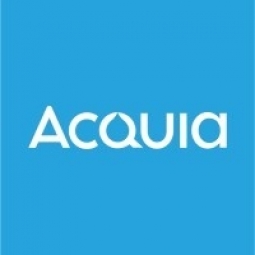Technology Category
- Application Infrastructure & Middleware - Middleware, SDKs & Libraries
- Functional Applications - Enterprise Asset Management Systems (EAM)
Applicable Industries
- Cement
- Chemicals
Applicable Functions
- Logistics & Transportation
- Product Research & Development
Use Cases
- Asset Health Management (AHM)
- Asset Lifecycle Management
About The Customer
Phillips 66 is a diversified energy company that manufactures, transports, and markets products that drive the global economy. The company's portfolio includes Midstream, Chemicals, Refining, and Marketing and Specialties businesses. Headquartered in Houston, Phillips 66 has employees around the globe who are committed to safely and reliably providing energy and improving lives while pursuing a lower-carbon future. The company was facing challenges in differentiating its brand from its peers and needed a solution to enhance its brand identity and growth.
The Challenge
Phillips 66, a diversified energy company, was facing a significant challenge in differentiating its brand from its competitors. A reputation study in 2018 revealed that target audiences were not familiar with the Phillips 66 brand, which was largely undifferentiated from its peers. The company's branding was generic and lacked a clear corporate brand identity. This lack of consistency and vision was affecting the company's internal customers - its employees, who lacked confidence in the brand and felt less empowered to promote the company to external audiences. Additionally, Phillips 66's brand guidelines were becoming outdated too quickly, and the company was reacting to changes rather than proactively building a playbook for employees. The company also faced a delay of up to 48 hours in asset delivery, which negatively impacted engagement and company-wide growth.
The Solution
To address these challenges, Phillips 66 implemented Acquia DAM (Digital Asset Management) as the company published new brand guidelines. The DAM's infrastructure and metadata were used to showcase the company's brand assets. The company adopted a multi-entry approach to presenting assets, including robust metadata, hierarchical categories synced to the business structure, and collections built by its designers to present curated content. The user experience was brought to life using portals, which visualized the company's color palettes, logos, and icon libraries. Phillips 66 leveraged Acquia DAM to seamlessly integrate with its web environment and workflows, sharing materials with outside creative agencies, and delivering content to internal and external users faster and more reliably. The company also used Acquia DAM to model how it wanted to see brand guidelines used, showcasing approved colors, styles, and fonts, so employees were immersed in the brand while using its elements for their own projects.
Operational Impact
Quantitative Benefit

Case Study missing?
Start adding your own!
Register with your work email and create a new case study profile for your business.
Related Case Studies.

Case Study
System 800xA at Indian Cement Plants
Chettinad Cement recognized that further efficiencies could be achieved in its cement manufacturing process. It looked to investing in comprehensive operational and control technologies to manage and derive productivity and energy efficiency gains from the assets on Line 2, their second plant in India.

Case Study
Honeywell - Tata Chemicals Improves Data Accessibility with OneWireless
Tata was facing data accessibility challenges in the cement plant control room tapping signals from remote process control areas and other distant locations, including the gas scrubber. Tata needed a wireless solution to extend its control network securely to remote locations that would also provide seamless communication with existing control applications.

Case Study
Advanced Elastomer Systems Upgrades Production
In order to maintain its share of the international market for thermoplastic elastomers AES recently expanded its Florida plant by adding a new production line. While the existing lines were operating satisfactorily using a PROVOX distributed control system with traditional analog I/O, AES wanted advanced technology on the new line for greater economy, efficiency, and reliability. AES officials were anxious to get this line into production to meet incoming orders, but two hurricanes slowed construction.
Case Study
Wireless GPS Tracking & Security Monitoring
Enhancing the security of hazardous freight and ensuring compliance with Homeland Security’s Transportation Security Administration mandate that all trains carrying chemicals capable of creating a toxic inhalation condition are equipped with on-board safety monitoring systems.

Case Study
Field Device Asset Management For Chemical Company in China
Chinese chemical subsidiary of multinational corporation serves customers throughout the world. Sales offices and research and technology centers are strategically located to provide rapid response to customer requests. Just two workers were assigned to maintain thousands of intelligent instruments in three production units, so they could do little more than react to device issues as they appeared. This costly maintenance method inevitably led to unexpected downtime when a critical instrument failed. Plant management recognized the need to change from reactive to predictive maintenance for all assets, including instruments and control valves, but help was needed in implementing such a technology-based initiative.








